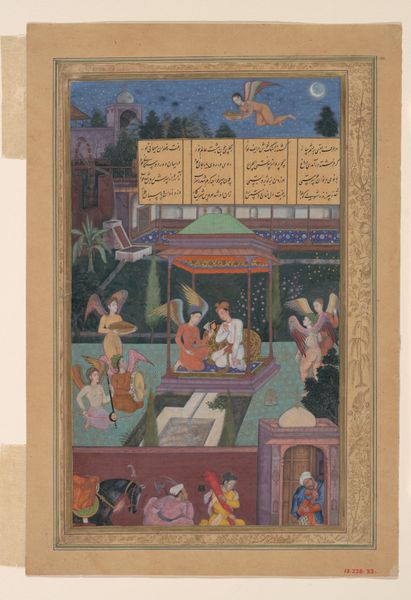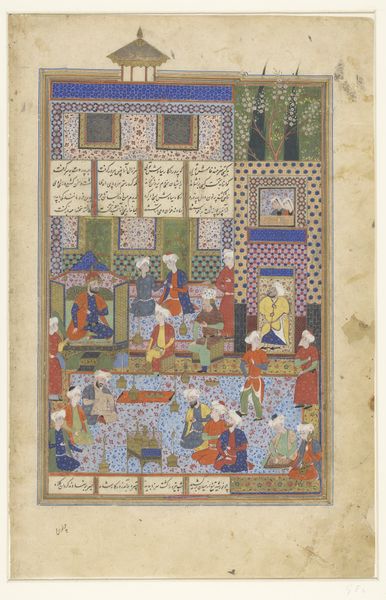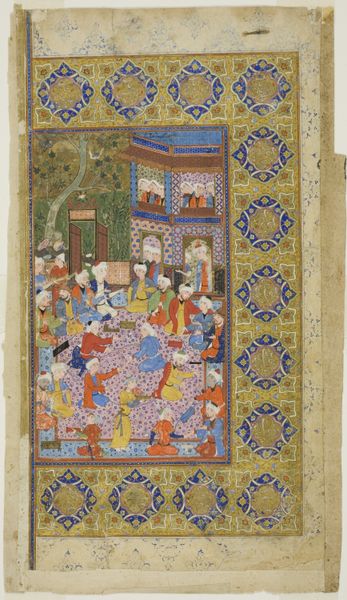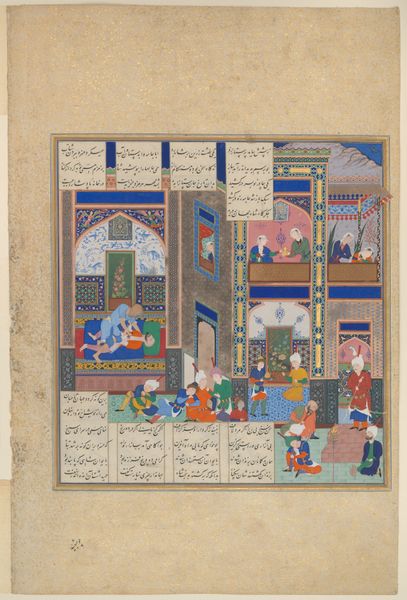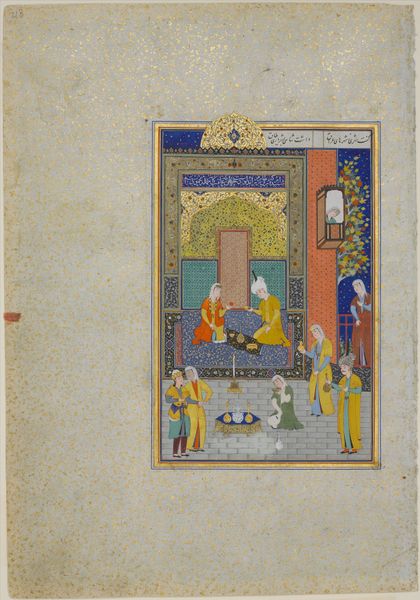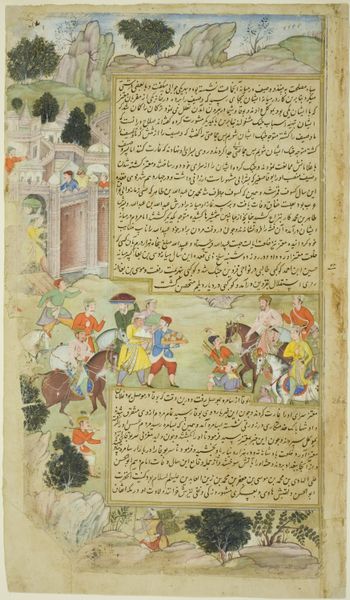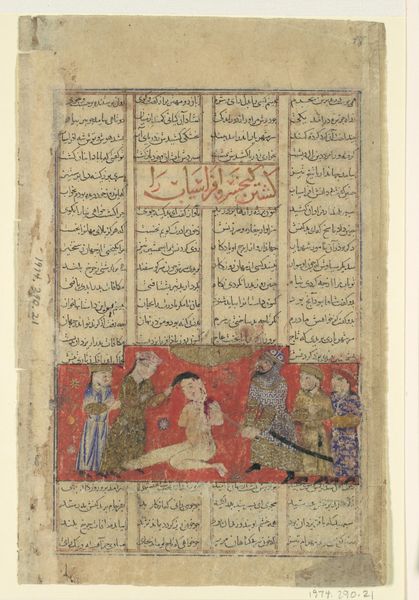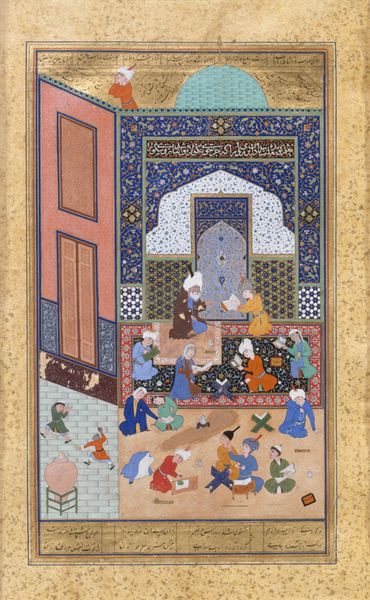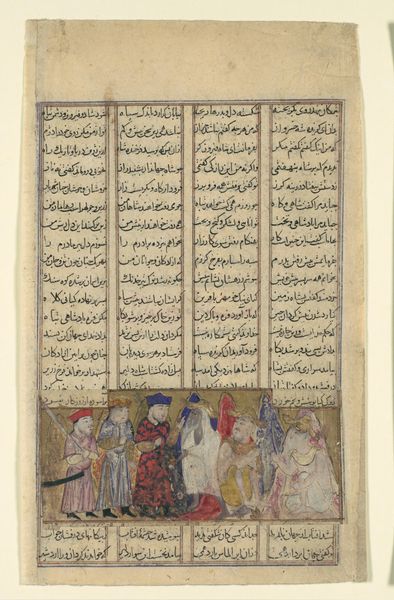
"Sultan Bayazid before Timur", Folio from an Akbarnama (History of Akbar) 1575 - 1625
0:00
0:00
painting, watercolor
#
portrait
#
animal
#
painting
#
asian-art
#
figuration
#
watercolor
#
horse
#
islamic-art
#
history-painting
#
miniature
Dimensions: Image: H.13 3/8 in. (34 cm) W. 8 1/4 in. (21 cm) Page: H.15 in. (38.1 cm) W. 9 1/2 in. (24.1 cm) Mat: H. 19 1/4 in. (48.9 cm) W. 14 1/4 in. (36.2 cm)
Copyright: Public Domain
Editor: This is a fascinating miniature painting, "Sultan Bayazid before Timur" from the Akbarnama, created sometime between 1575 and 1625. It's watercolor on paper. The composition, with the ruler enthroned in the center, really draws my eye. It feels almost like a meticulously arranged stage. What strikes you most about its visual language? Curator: The organizing principle lies in the geometry itself. Notice the subtle yet insistent verticals - the figures standing, the architectural elements - creating a visual rhythm against the horizontality of the seated figures and the text above. This push and pull guides the eye and establishes a sense of hierarchical order, even before one deciphers the narrative. Observe also the use of color: the relatively muted palette punctuated by concentrated jewel tones around the central figure. Do these choices enhance or detract from the narrative’s clarity? Editor: That's an interesting way to put it! It seems the controlled palette amplifies the significance of the jewel-toned Bayazid. What about the application of the paint itself? The figures feel very tightly rendered... Curator: Indeed. The highly refined brushwork contributes to the overall sense of precision and control. The surfaces are smooth, with minimal visible texture. What effect does this polished finish have on your experience of the image? Does it create a sense of distance or draw you closer to the scene? Editor: It almost feels like looking at a jewel! Polished and precise, it has a distancing, yet mesmerizing effect. This focused observation of structure provides an invaluable framework for my further examination. Curator: Precisely. This allows a deeper understanding, peeling back layers of design choices!
Comments
No comments
Be the first to comment and join the conversation on the ultimate creative platform.

